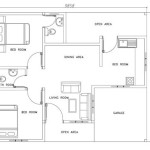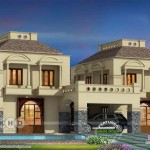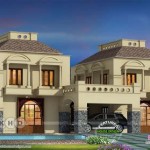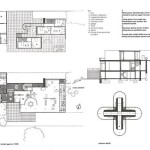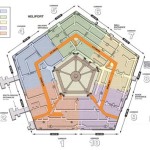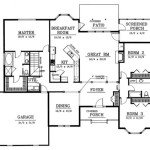Essential Aspects of Planning House Architecture
Designing a dream home is an exciting yet challenging endeavor. Careful planning and attention to detail are paramount to create a space that is both functional and aesthetically pleasing. Here are some essential aspects of house architecture that should be considered:
Layout and Functionality
The layout of a house plays a crucial role in its functionality. The flow of spaces, from the entryway to the living areas and bedrooms, should be seamless and logical. Consider the number of rooms, their purpose, and the size of each space to ensure optimal functionality.
Structural Integrity
The structural integrity of a house is paramount for safety and durability. The foundation, walls, roof, and all other structural elements must be designed and constructed to withstand external forces such as wind, rain, and earthquakes. Proper insulation and ventilation are also essential to maintain a comfortable indoor environment.
Energy Efficiency
In today's environmentally conscious world, energy efficiency is a major consideration in house architecture. Features such as double-glazed windows, energy-efficient appliances, and insulation can significantly reduce energy consumption and lower utility bills.
Natural Light and Ventilation
Natural light and ventilation are essential for well-being and comfort. Large windows and well-placed openings allow natural light to flood into the house, reducing the need for artificial lighting. Cross-ventilation promotes air circulation and creates a healthy indoor environment.
Exterior Aesthetics
The exterior aesthetics of a house contribute to its overall curb appeal. The choice of materials, colors, and architectural features should complement the surrounding environment and reflect the desired style of the home. Consider factors such as the roofline, siding, and landscaping to create a cohesive and visually appealing exterior.
Indoor Finishes and Fixtures
The interior finishes and fixtures play a significant role in the ambiance and comfort of a house. Flooring, walls, and ceilings should be carefully selected to complement the overall design scheme. Lighting fixtures should provide adequate illumination and create a welcoming atmosphere.
Sustainability
Sustainability should be at the forefront of house architecture. By incorporating sustainable materials, energy-efficient features, and water conservation techniques, architects can create homes that are environmentally responsible and reduce their carbon footprint.

House Plans Home Floor Architecturalhouseplans Com

House Plans How To Design Your Home Plan

Do You Imagine When We Create Your Imagination Into Reality With The Low Architectural House Plans Projects Architecture Building Designs

Plan 4525 Design Studio Architectural House Plans Floor Dream

House Plans How To Design Your Home Plan

Floor Plan Wikipedia

How To Build A House From Paper Plaster Architectural Digest

Top 5 Modern House Plans With Photos Floor Archid

20 Examples Of Floor Plans For Social Housing Archdaily

Architectural Planning At Rs 25 Sq Ft In Varanasi

